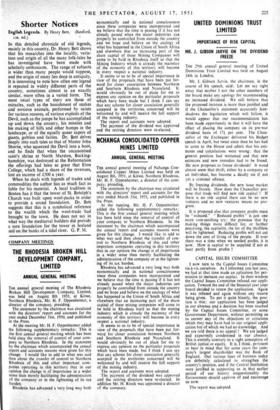Shorter Notices
English Legends. By Henry Bett. (Batsford.
25. 6d.) •
IN this detailed chronicle of old legends, mainly in this country, Dr. Henry Bett shows that his researches into the locality, varia- tion and origin of all the many folk-tales he has investigated have been made with scholarly enthusiasm. The range of subjects is wider than many people would suppose, and the origin of many lies deep in antiquity. It is interesting to note how often one legend is repeated in widely different parts of the country, sometimes almost in an exactly similar, more often in a varied form. The most usual types of story are those of miracles, such as the banishment of snakes and noxious animals, performed by saints for various reasons, of various exploits of the Devil, such as the jumps he has accomplished up and down the country, his missiles and his making of hills and other humps in the landscape, or of the equally queer capers of giants, goblins and fairies. Dr. Ben delves deeply into- such tales as that of Master John Shorne, who squeezed the Devil into a boot, and he finds that when the uncanonised saint's shrine at North Marston, Bucking- hamshire, was destroyed at the Reformation the offerings had been so great that Eton College, which had a share of the revenues, lost an income of £500 a year.
When he deals with legends of trades and commodities the author has as much fact as fable for his material. A local tradition in Boston has it that the tower of St. Botolph's Church was built upon wool-packs in order to provide a sound foundation. Dr. Bett suggests that this is a symbolical reference to the wealth which the wool-trade I had brought to the town. He does not say in what way the mediaeval builders did provide a sure foundation for the tower in fenland soil on the banks of a tidal river. G. P. M.






























 Previous page
Previous page